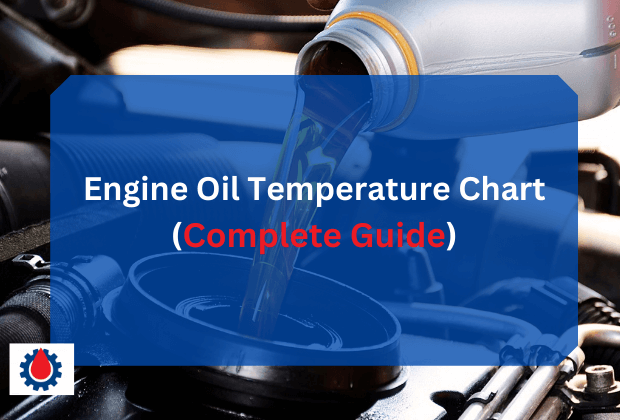Engine oil temperature plays a crucial role in the performance and longevity of your engine. Too low, and the oil won’t lubricate properly; too high, and it can break down, leading to engine wear and potential failure.
In this post, we’ll explain engine oil temperature ranges, ideal operating temperatures, common oil types, and how to maintain proper engine oil temperature. We’ll also include a comprehensive engine oil temperature chart in table format for easy reference.
Engine Oil Temperature Chart
| Oil Temperature (°F/°C) | Condition | Effect on Engine Oil & Performance |
|---|---|---|
| Below 100°F (38°C) | Too Cold | Oil is too thick, poor lubrication |
| 100°F – 150°F (38°C – 65°C) | Warming Up | Oil begins to flow, but still thick |
| 150°F – 195°F (65°C – 90°C) | Moderate | Lubrication improves, engine efficiency increases |
| 195°F – 220°F (90°C – 105°C) | Optimal | Best temperature for performance & longevity |
| 220°F – 250°F (105°C – 121°C) | High | Oil thins, potential loss of protection |
| Above 250°F (121°C) | Overheated | Risk of oil breakdown and engine damage |
Read Normal Engine Oil Temperature(Find Out the Safe Range)
Why Engine Oil Temperature Matters
The temperature of your engine oil impacts its ability to lubricate, clean, and cool engine components. When oil gets too hot or too cold, it can lose its effectiveness, leading to increased friction, sludge buildup, and potential engine failure.
Effects of Low and High Oil Temperature:
- Too Low: Oil thickens, reducing flow and lubrication, leading to poor performance and wear.
- Too High: Oil thins out, reducing its protective properties, leading to overheating and increased friction.
Ideal Engine Oil Temperature Range
Below 150°F (65°C): Oil is too cold, leading to poor lubrication.
150°F – 195°F (65°C – 90°C): Oil starts to warm up but may still be too thick.
195°F – 220°F (90°C – 105°C): Optimal oil temperature range.
220°F – 250°F (105°C – 121°C): Oil begins to thin, reducing protection.
Above 250°F (121°C): Risk of oil breakdown and engine damage.
Read Does Engine Oil Have A Use By Date(how long does oil last)
Engine Oil Types and Their Temperature Ranges
Different oil types are designed to function optimally within specific temperature ranges. It is crucial to choose the right oil based on your engine’s operating temperature.
| Oil Type | Viscosity | Ideal Temperature Range (°F/°C) | Best Use Case |
|---|---|---|---|
| Conventional Oil | 10W-30 | 195°F – 220°F (90°C – 105°C) | Older engines, general driving |
| Synthetic Oil | 5W-30, 5W-40 | 195°F – 230°F (90°C – 110°C) | High-performance, extreme temperatures |
| High-Performance Racing Oil | 10W-60 | 220°F – 250°F (105°C – 121°C) | Racing engines, heavy load applications |
| Diesel Engine Oil | 15W-40 | 200°F – 230°F (93°C – 110°C) | Heavy-duty trucks, high-torque engines |
Read Engine Oil Capacity Chart(Guide Model A to Z)
Why Synthetic Oil Performs Better at Higher Temperatures
Synthetic oils are engineered to handle higher temperatures without breaking down. They offer:
- Better thermal stability
- Reduced sludge formation
- Improved lubrication in extreme conditions
How to Monitor and Maintain Proper Engine Oil Temperature
To prevent overheating or cold oil issues, monitoring oil temperature is essential. Here are some ways to maintain optimal oil temperature:
1. Use the Right Oil for Your Climate
- In cold climates, use low-viscosity oil (e.g., 5W-30) to ensure proper flow.
- In hot climates, opt for higher-viscosity oil (e.g., 10W-40) for better protection.
2. Install an Oil Temperature Gauge
Modern vehicles often have built-in oil temperature sensors, but if yours doesn’t, installing a gauge can help monitor oil conditions in real-time.
3. Regular Oil Changes
Old, degraded oil loses its ability to regulate temperature properly. Stick to the manufacturer’s recommended oil change intervals.
4. Ensure Proper Cooling System Function
The radiator, oil coolers, and fans are vital in keeping engine oil at the right temperature. Regularly inspect these components for leaks or malfunctions.
5. Avoid Excessive Idling and Overloading
Long idle times and carrying heavy loads can cause excessive engine heat buildup, increasing oil temperature beyond safe limits.
Read Oil Drain Plug Torque Chart(Vehicles A to Z)
Signs of Engine Oil Overheating
If your engine oil gets too hot, you may notice:
- Burning Smell – A strong burnt oil smell means oil breakdown is occurring.
- Oil Warning Light – Some cars have a temperature warning for oil.
- Thick Exhaust Smoke – Overheated oil can burn and produce smoke.
- Engine Knock or Noise – Inadequate lubrication causes internal friction.
What to Do if Your Engine Oil Overheats
- Pull Over and Let the Engine Cool Down – Avoid driving further to prevent damage.
- Check the Oil Level – Low oil can contribute to overheating.
- Inspect the Cooling System – Look for radiator leaks, fan malfunctions, or clogged air filters.
- Use High-Quality Engine Oil – Synthetic oils resist breakdown at high temperatures better than conventional oils.
Read Check Engine Light After Oil Change(8 Causes & Fixes)
FAQs
What is the normal temperature for engine oil?
The normal operating temperature for engine oil is between 195°F and 220°F (90°C – 105°C). This range allows the oil to flow efficiently and provide optimal lubrication while maintaining engine performance.
What car oil temp is high?
Oil temperature is considered high when it exceeds 250°F (121°C). Beyond this point, oil begins to break down, losing its ability to lubricate effectively, which can lead to increased engine wear and potential overheating.
What temperature should oil be kept at?
For optimal performance and longevity, engine oil should be kept within 195°F – 220°F (90°C – 105°C). However, high-performance engines and racing vehicles may operate safely at slightly higher temperatures, around 230°F – 250°F (110°C – 121°C).
Read Normal Oil Pressure for Diesel Engines(Norma Pressure Range)
What temperature should I check my engine oil?
For an accurate reading, you should check your engine oil when the engine is cold or has been off for at least 10-15 minutes. This allows the oil to settle in the oil pan, giving you an accurate dipstick reading.
What happens when engine oil gets too hot?
If engine oil overheats and goes beyond 250°F (121°C), it can:
- Lose its viscosity, becoming too thin to properly lubricate the engine.
- Break down, leading to sludge formation and deposits.
- Increase engine wear and friction.
- Potentially cause engine overheating and failure.
What is the correct engine temperature?
The correct coolant (engine) temperature for most vehicles is 190°F – 220°F (88°C – 105°C). This is closely related to oil temperature, as the engine’s cooling system helps regulate both.




